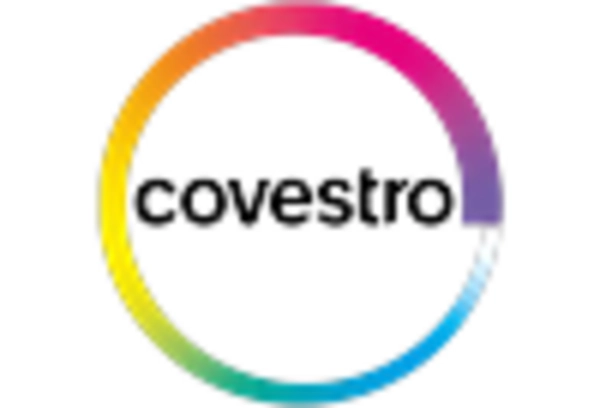The Glass Alternative Material Market is rapidly evolving, driven by advancements in technology, increasing consumer demand for sustainable and innovative products, and the necessity to reduce the weight and fragility associated with traditional glass materials. Competitive insights within this market indicate a dynamic landscape where companies compete on innovation, product quality, sustainability, and cost-effectiveness. With a focus on reducing environmental impacts and enhancing functionality, players in the market are leveraging cutting-edge materials such as plastics, composites, and bio-based alternatives to meet diverse customer needs across various industries, including construction, automotive, packaging, and consumer electronics.
The competitive environment is characterized by strategic partnerships, mergers and acquisitions, and significant investments in research and development to stay ahead of market trends and consumer expectations.DuPont has established a strong presence within the Glass Alternative Material Market, showcasing its expertise in advanced material technology. The company's commitment to innovation is reflected in its diverse portfolio of products that serve as effective substitutes for traditional glass, offering advantages such as reduced weight, enhanced shatter resistance, and improved thermal insulation. DuPont's strong research and development capabilities enable it to consistently introduce high-performance materials that meet the specific requirements of various applications.
The company's emphasis on sustainability is also a significant strength, as it actively develops solutions that contribute to reducing carbon footprints while maintaining superior operational performance. Moreover, DuPont's established distribution networks and partnerships with key industry players facilitate its access to a wide range of markets, enhancing its competitive edge.BASF, a leader in the chemical industry, plays a pivotal role in the Glass Alternative Material Market with its innovative material solutions.
The company capitalizes on its vast expertise in polymer chemistry to produce materials that effectively serve as alternatives to glass, catering to industries such as automotive, construction, and consumer goods. BASF's strengths lie in its advanced technological capabilities, which allow for the development of high-performance materials that provide durability, lightweight properties, and versatility in design. Additionally, BASF places a strong emphasis on sustainability and circular economy principles, actively working to offer eco-friendly solutions that minimize environmental impact.
Its comprehensive market presence, combined with a robust research and development framework, positions BASF as a key player, ensuring its continued relevance and competitiveness in the ever-evolving landscape of glass alternative materials.

















Leave a Comment